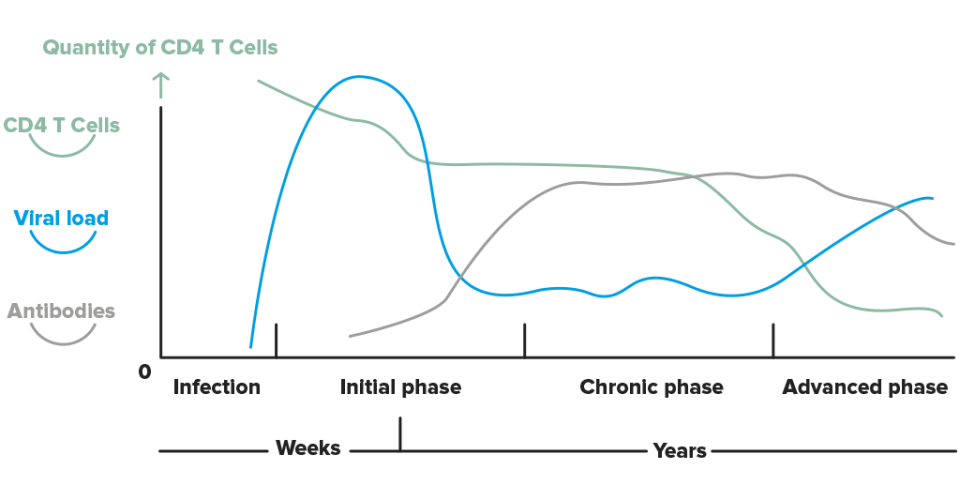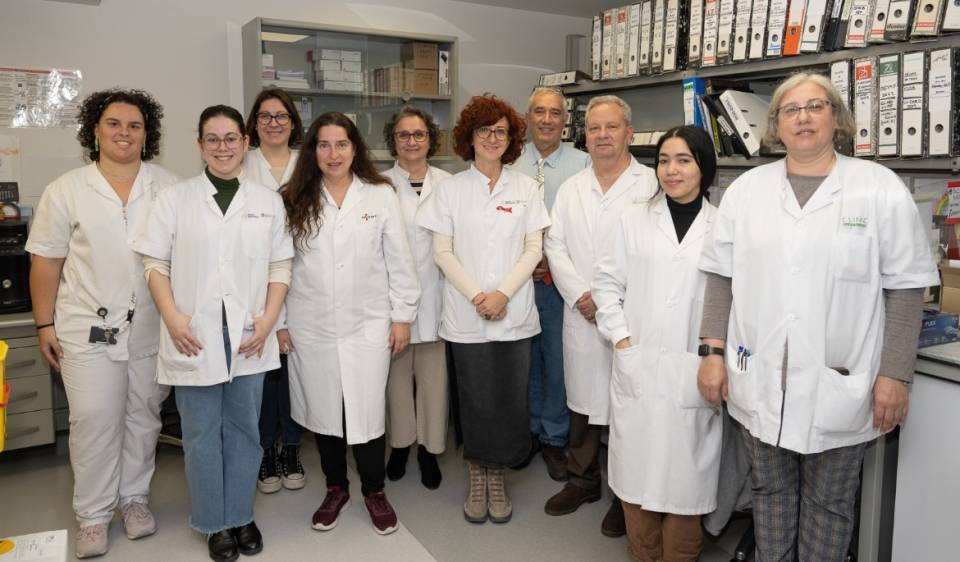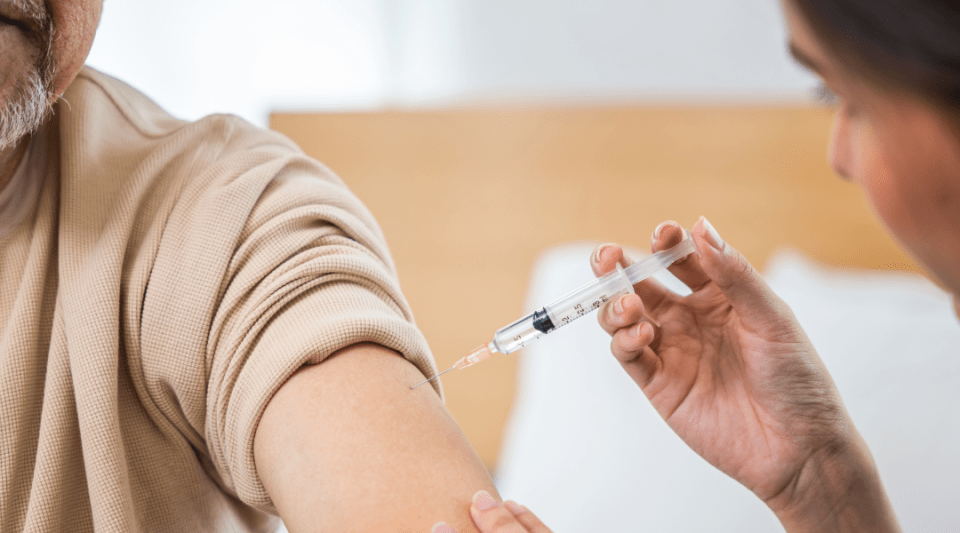- What is it?
- Diagnosis
- Treatment
- Living with the disease
- Research lines
- Frequently Asked Questions
- Prevention
-
The disease at the Clínic
- Equipo y estructura
Diagnosis of HIV
An indirect method called serology is used to diagnose HIV. This type of analysis helps us detect whether there are any HIV antibodies, substances produced by our immune system when it recognises the virus as a foreign body. The presence of HIV antibodies indicates the body has been infected by the virus.
There is a delayed period between when the patient acquires the infection until the moment their immune system develops HIV antibodies during which diagnostic antibody tests give negative results. This phase is known as the window period and lasts 6 – 8 weeks. It is therefore recommended to repeat the test from the third month after the last risk-associated event.
Initial assessment of the overall health and clinical follow-up
Although it is necessary to start antiretroviral treatment as soon as possible, in most cases, the medical decisions that can be taken at this moment with respect to patients’ health are not extremely urgent. Therefore it is important trying to relax and taking one’s time. Assimilating and adapting to HIV will help patients to better understand the tests and examinations that they will later undergo and what their objective is.
The first weeks and months are essential for learning about one’s general health condition and the level of HIV infection at the time of diagnosis. This means that patients will probably have to make several visits to the hospital to carry out different tests and analyses.
For many people it can imply a great effort to avoid missing any of their medical appointments in this initial phase, a period when most patients have still not fully accepted their diagnosis of HIV and experience difficulties to adapt to their new situation.
It is important to know that in the initial assessment the appointment with the nurse can prove very helpful in terms of adapting to the new health condition, providing patients with emotional support, guidelines for handling situations of risk, information about a healthy lifestyle, etc. Their medical history will be opened in the initial assessment. This is a document that will collect and record all the data about one’s health, test results, analytical results and a summary of one’s overall condition assessed at each appointment, among other information. It is a confidential document, this means that only the patient’s medical team and the patient can access it. They will also undergo a complete physical examination.
In all future routine follow-ups, the medical team will perform a blood analysis that provides very valuable information about the state of the overall health, the infection and the immune system. The analysis includes two results to which patients should pay special attention:
- CD4 count. This indicates the concentration of CD4 cells in blood, which in turn provides an indication of the immune system’s strength. The higher the count, the better.
- Viral load level. This indicates the amount of HIV present in blood. Ideally is better to have the lowest possible amount.
The analytical tests also measure other important indicators of general health:
- Complete blood count (haemogram). Provides data about the number of red and white cells in your blood. This gives us a lot of information about the state of health.
- Glucose level. Helps to determine the presence of diabetes and/or the risk of developing it in the future.
- Lipids level. It is a good idea to know whether the level of fats in blood is placing the heart at risk.
- Liver function. This means it is possible to determine if the liver can process the medication correctly.
- Kidney function. This test serves to check whether the kidneys can eliminate waste products from the body.
What is the viral load?
Viral load is a quantification of the amount of HIV found in blood or the amount of viral RNA present in a sample. It is determined using molecular biology or genetic diagnostic techniques.
When the serology analysis gives a positive result it estimates the number of HIV-RNA copies per millilitre of plasma, i.e., the viral load, thus providing information about the viral replication activity. In general, more viral copies represent a greater risk of developing AIDS (although this will occur with time anyway) and an increased risk of infecting sexual partners.
The viral load is also used as a prognostic indicator and to monitor the effectiveness of antiretroviral therapy. Given that HIV produces a lifelong infection in people with HIV, a positive serology (when HIV-specific antibodies are detected in the blood) is invariably a sign of the infection’s presence.
Fast diagnosis test
Tests known as “rapid HIV tests” have become popular in recent years. They involve taking a sample of saliva (less sensitive) or a drop of blood, by means of a finger prick, to determine if the person has generated antibodies. This test is often used when screening very large populations. The test can be taken in hospitals, as well as in several NGOs and primary healthcare centres. Either way, a positive result requires confirmation using a traditional antibody detection method (ELISA) on a blood sample.
Contact tracing: T-comunico
HIV contact tracing is a search by a person recently diagnosed with HIV in an attempt to identify the people with whom they have had high-risk sex. The purpose being to inform the contacts about the possible risk of infection so that they can then take the test.
Why is it important?

One in every four people living with HIV is unaware they have the infection.

Around 40% of HIV diagnoses are considered to be late, in other words, cases that are diagnosed when the infection has already started to have a negative impact on the person’s health.

Population-level control of HIV disease requires prevention of contagion, detection of new cases and the provision of treatment for those infected. When there is no curative or definitive treatment, as in the case of HIV disease, then contact tracing becomes essential. It is the best tool for identifying new cases, and therefore reducing transmission, while also offering the best possible care to affected contacts.
What are the goals of contact tracing?
His goal is to decrease the transmission of the virus; to reduce the rate of late diagnoses; to facilitate access to treatment and medical supervision and to decrease the number of medical complications derived from disease.
Substantiated information by:



Published: 20 February 2018
Updated: 5 December 2022
Subscribe
Receive the latest updates related to this content.
(*) Mandatory fields
Thank you for subscribing!
If this is the first time you subscribe you will receive a confirmation email, check your inbox



